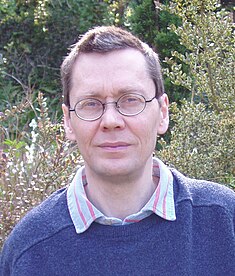
Alan Alexander Milne was an English writer best known for his books about the teddy bear Winnie-the-Pooh, as well as for children's poetry. Milne was primarily a playwright before the huge success of Winnie-the-Pooh overshadowed all his previous work. Milne served in both World Wars, as a lieutenant in the Royal Warwickshire Regiment in the First World War and as a captain in the Home Guard in the Second World War.
Ernest Howard Shepard was an English artist and book illustrator. He is known especially for illustrations of the anthropomorphic animal and soft toy characters in The Wind in the Willows and Winnie-the-Pooh.

Christopher Robin is a character created by A. A. Milne, based on his son Christopher Robin Milne. The character appears in the author's popular books of poetry and Winnie-the-Pooh stories, and has subsequently appeared in various Disney adaptations of the Pooh stories.

A Heffalump is an elephant-like character in the Winnie-the-Pooh stories by A. A. Milne. Heffalumps are mentioned, and only appear, in Pooh and Piglet's dreams in Winnie-the-Pooh (1926), and are seen again in The House at Pooh Corner (1928). Physically, they resemble elephants; E. H. Shepard's illustration shows an Indian elephant. They are later featured in the animated television series The New Adventures of Winnie the Pooh (1988–1991), followed by two animated films in 2005, Pooh's Heffalump Movie and Pooh's Heffalump Halloween Movie'
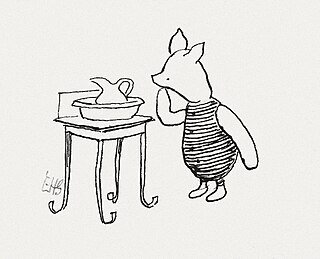
Piglet is a fictional character from A. A. Milne's Winnie-the-Pooh books. Piglet is Winnie‑the‑Pooh's closest friend amongst all the toys and animals featured in the stories. Although he is a "Very Small Animal" of a generally timid disposition, he tries to be brave and on occasion conquers his fears.

Rabbit is a fictional character in the book series and cartoons Winnie-the-Pooh. He is a friend of Winnie-the-Pooh, regards himself as practical and tends to take the lead, though not always with the results that he intends.

Roo is a fictional character created in 1926 by A. A. Milne and first featured in the book Winnie-the-Pooh. He is a young kangaroo and his mother is Kanga. Like most other Pooh characters, Roo is based on a stuffed toy animal that belonged to Milne's son, Christopher Robin Milne. Though stuffed, Roo was lost in the 1930s in an apple orchard somewhere in Sussex.

Winnie-the-Pooh is a 1926 children's book by English author A. A. Milne and English illustrator E. H. Shepard. The book is set in the fictional Hundred Acre Wood, with a collection of short stories following the adventures of an anthropomorphic teddy bear, Winnie-the-Pooh, and his friends Christopher Robin, Piglet, Eeyore, Owl, Rabbit, Kanga, and Roo. It is the first of two story collections by Milne about Winnie-the-Pooh, the second being The House at Pooh Corner (1928). Milne and Shepard collaborated previously for English humour magazine Punch, and in 1924 created When We Were Very Young, a poetry collection. Among the characters in the poetry book was a teddy bear Shepard modelled after his son's toy. Following this, Shepard encouraged Milne to write about his son Christopher Robin Milne's toys, and so they became the inspiration for the characters in Winnie-the-Pooh.
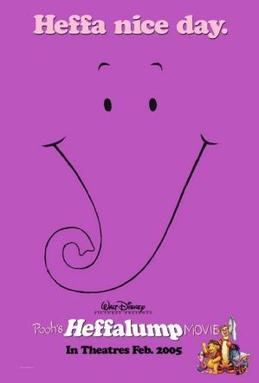
Pooh's Heffalump Movie is a 2005 American animated musical adventure comedy-drama film produced by the Japanese office of Disneytoon Studios and released by Walt Disney Pictures. Featuring characters from A. A. Milne's Winnie-the-Pooh stories, the film is the fourth theatrical animated film in Disney's Winnie the Pooh franchise and DisneyToon Studios's third adaptation of Winnie the Pooh stories, following The Tigger Movie (2000) and Piglet's Big Movie (2003). The film was released theatrically on February 11, 2005. The film was followed by a direct-to-video Halloween sequel titled Pooh's Heffalump Halloween Movie which came out seven months after the film's release.

The Hundred Acre Wood is a part of the fictional land inhabited by Winnie-the-Pooh and his friends in the Winnie-the-Pooh series of children's stories by author A. A. Milne. The wood is visited regularly by the young boy Christopher Robin, who accompanies Pooh and company on their many adventures.
Mary Eleanor Jessie Knox née Shepard was an English illustrator of children's books. She is best known for the Mary Poppins stories written by P. L. Travers. She used her married name Mary Knox outside the publishing industry.
Winnie-the-Pooh is a fictional teddy bear, and the central character in the book series by A. A. Milne.
Christopher Manson is a children's book author and illustrator noted for his use of traditional hand tools to painstakingly make the pine woodcuts that fill his several highly acclaimed works.

Winnie-the-Pooh is a fictional anthropomorphic teddy bear created by English author A. A. Milne and English illustrator E. H. Shepard. Winnie-the-Pooh first appeared by name in a children's story commissioned by London's Evening News for Christmas Eve 1925. The character is inspired by a stuffed toy that Milne had bought for his son Christopher Robin in Harrods department store, and a bear they had viewed at London Zoo.

Return to the Hundred Acre Wood is a Winnie-the-Pooh novel published on 5 October 2009. Written by David Benedictus and illustrated by Mark Burgess, it was the first such book since 1928 and introduced the character Lottie the Otter.
David Henry Benedictus was an English writer and theatre director, best known for his novels. His work included the Winnie-the-Pooh novel Return to the Hundred Acre Wood (2009). It was the first such book in 81 years.
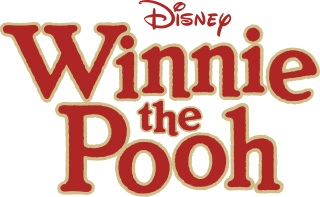
Winnie the Pooh is a media franchise produced by The Walt Disney Company, based on A. A. Milne and E. H. Shepard's stories featuring Winnie-the-Pooh. It started in 1966 with the theatrical release of the short Winnie the Pooh and the Honey Tree.
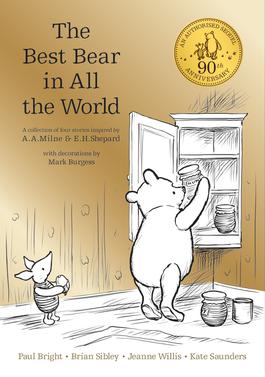
Winnie-the-Pooh: The Best Bear in All the World is the second authorised sequel to A. A. Milne's original Winnie-the-Pooh stories. It was published on 6 October 2016 to mark the 90th anniversary of the publication of the first Winnie-the-Pooh book. The sequel is an anthology of four short stories, each written by a leading children's author. The four contributors are Paul Bright, Jeanne Willis, Kate Saunders, and Brian Sibley. The illustrations, in the style of the originals by E. H. Shepard, are by Mark Burgess. The book attracted national press coverage because of the introduction of a new character, Penguin.

Winnie-the-Pooh: Blood and Honey is a 2023 British independent slasher film edited, produced, written and directed by Rhys Frake-Waterfield. It serves as a horror reimagining to A. A. Milne and E. H. Shepard's Winnie-the-Pooh books and stars Craig David Dowsett as the titular character, and Chris Cordell as Piglet, with Amber Doig-Thorne, Nikolai Leon, Maria Taylor, Natasha Rose Mills, and Danielle Ronald in supporting roles. It follows Pooh and Piglet, who have become feral and bloodthirsty murderers, as they terrorise a group of young university women and Christopher Robin when he returns to the Hundred Acre Wood five years later after leaving for college.
